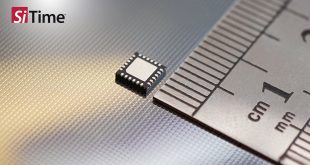Barring an unforeseen economic slump in world markets or grave missteps by the industry, revenue should continue to climb during the next few years, hitting approximately $412.8 billion by 2016.
“Semiconductor revenue growth is expected to rise in 2012 compared to last year as consumers begin to believe that the global economic recovery is for real,” said Len Jelinek, director and chief analyst of semiconductor manufacturing at IHS. “The biggest drivers of demand will be consumer-oriented products from the wireless semiconductor segment, such as smartphones and media tablets. The iPhone and iPad from Apple Inc. are perpetual best-sellers in their category, but a swarm of competing products will also help enlarge the total pool of offerings and thus increase sales. In particular, semiconductor suppliers can anticipate an exceptionally robust third quarter this year in preparation for strong holiday sell-through.”
Meanwhile, the ultrabook platform will have only a minimal impact in driving sales revenue in 2012 for the massive semiconductor market, even though the long-term growth potential of the product is strong. But with the introduction of Windows 8 by Microsoft Corp. and touch-screen capability for the operating system later this year, ultrabooks will have the potential to become a key market revenue driver in 2013.
The three major areas of strength for the semiconductor industry this year will be NAND flash, logic application-specific integrated circuits (ASIC) and microprocessors (MPU). The revenue increases in NAND and logic ASICs are a result of expected higher sales from tablets and smartphones, while the revenue expansion in MPUs will be driven by renewed growth in notebooks and the gradual emergence of ultrabooks.
Although semiconductor suppliers have reduced their inventory by 7.5 percent over the last six months, total inventory remains at high levels both in terms of aggregate dollar value as well as in days of inventory. As a result, the industry remains in a tenuous position. Further reductions are necessary for manufacturers to experience sustained demand, and companies must continue to monitor inventory levels closely to reduce them through the first half of the year.
The largest portion of inventory is held by integrated device manufacturers (IDM)—the companies that both design and manufacture their own semiconductor chips. By tradition, IDMs do not reduce inventory as aggressively as fabless semiconductor companies—the firms that undertake chip production for clients that do not have their own factories. This is partly because IDMs have larger product portfolios, and also because IDMs believe that in good times they will be able to reduce inventory much more quickly.
Since the end of the second quarter of 2011, IDMs have reduced their inventory by only 5.4 percent—a minimal count when one considers that IDMs on average hold between 77 and 79 percent of finished goods inventory.
Sustainable growth will not occur until the industry reduces total inventory by at least another 5 percent, IHS believes.
 CIE Components in Electronics
CIE Components in Electronics



